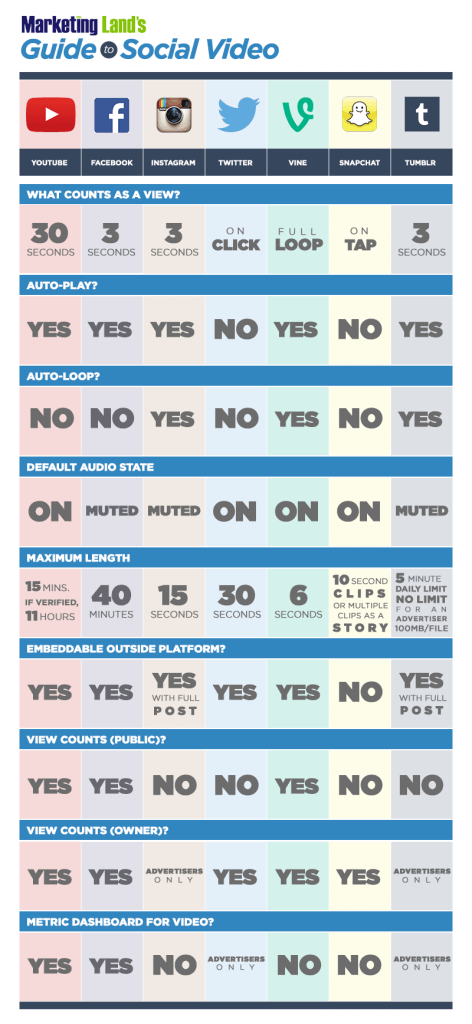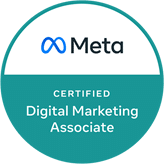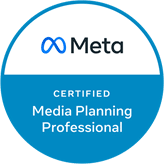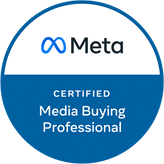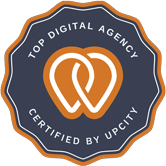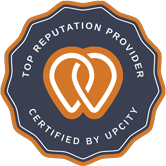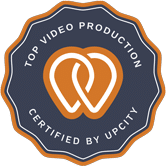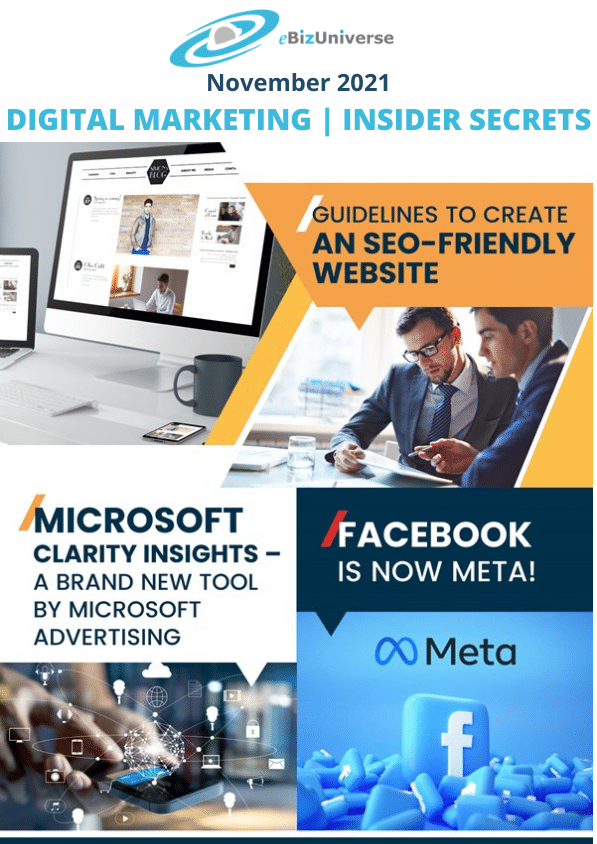





SEO (Search Engine Optimization) can help you increase the visibility of your website when your target audience is searching for services or products related to your business. The process involves optimizing your website and content as well as staying well-informed about your competitors.
Reasons to design an SEO-friendly website…
a) Greatly improve customer experience
Good customer experience ensures that they will return to your site the next time. Also, the more time the customers spend on your site, the higher your rankings are.
b) Gain the favor of web crawlers
SEO helps you to update your site according to the latest search engine requirements, enhancing your rankings significantly.
c) Increase customer engagement
An effective SEO strategy can help you attract more customers and ensure that they spend more time on your site. This step is very important to improve your rankings.
d) Achieve a higher ranking
You must work on your website content, site design, and SEO strategy to rank higher. Higher rankings ensure that you have better sales and that you stay on par with your competitors.
e) Excellent returns
SEO activities are known to deliver the best return on investment. When you achieve a higher ranking and relevant site traffic, you can easily get the desired returns.
Points to consider while designing an SEO-friendly website.
a) Easier website navigation
Buyers prefer a website that has relevant, organized information. Don’t forget to incorporate a sitemap page so that users can easily find and visit the required link.
b) Select an SEO-friendly domain
Your domain name should have keywords related to your services or products. This helps your target customers to find your business easily. Also, the domain name should be unique yet relevant to your industry.
c) Optimal & easy-to-understand content
Your website content can affect its loading speed. It is important to keep your website light to ensure an excellent user experience.
d) Mobile-friendly site
Many people access various websites through their mobile. A mobile-responsive website ensures that your target customers can reach out to you via various gadgets.
e) Reach out through social media
Social media can help you drive traffic to your site, improve your online presence, and increase sales.
f) Add captions to your images & videos
Adding captions ensures that website crawlers can find your content. Insert appropriate keywords in your captions so that people can find the content easily.
g) Update your content
Creating new content is a must to increase the rankings of your pages. The best way is to remove old, low-ranking articles and add new, fresh information to attract new audiences.
h) Include internal and external links in your strategy
-
- Internal links can help a visitor to navigate your website easily. It aims to introduce other web pages of your site to visitors.
- When external links direct users to your website, search engines consider your site reliable and trusted.
- Link building does take time, but it can significantly boost your traffic.
Web design mistakes to avoid…
a) Repetitive heading tags
Adding appropriate & unique headers (H1 and H2 tags) at the right locations can help improve your rankings. Also, adding necessary keywords is a must.
b) Non-responsive website design
If your website is not mobile-friendly, you may lose a lot of customers. If your site is not compatible with mobile phones, you should get this issue fixed as soon as possible.
c) High-resolution images
Large size images can affect the loading speed of your website. The best way to upload images is to compress and resize them. Use Google PageSpeed Insights tools to check the loading speed of your pages.
d) Too short content
To optimize the page loading speed, many designers do not add much content to the site, forgetting that it is equally important to add good, informative content to your site.
e) Adding the infinite scrolling feature
It is one of the effective ways to hold your users on your site for a longer time. Splitting the content of a website can make it easier for web crawlers to crawl them.
Lastly…
Whether you are creating a new website or improving a current one, keep the target audience and search engine algorithm in mind. Talk to your SEO experts and follow the above guidelines to improve your rankings. If you need help, we are just a call away.
Analyze your site?

To come up with a successful marketing campaign, advertisers need to understand post-click user behavior and engagement on landing pages. This is precisely why Microsoft Advertising took it upon itself to introduce a new tool last month – Microsoft Clarity Insights!
An overview of the key benefits of this tool
- More Powerful Data – It helps you to understand the customer journey and enhance the signals to make optimization decisions on your website and advertising campaigns.
- Free Website Analytics – It enables you to gain a deeper understanding of user behavior, path to conversion, and engagement on the landing pages.
-
- Use Sessions Recordings to replay user sessions and better understand the customer journey
- Through Instant Heatmaps decode engagement on ad landing pages, including clicks, scrolls, and movement
- Make the most of the powerful Analysis Dashboard to analyze engagement by campaigns, channels, and browsers
- Seamless UET (Universal Event Tracking) Upgrade – Sign up using your existing MS Advertising credentials and your existing JavaScript UET tags will be updated on the back end.
Several companies have harnessed the power of Clarity Insights to:
- Increase the average time their customers spend on their blog
- Significantly improve their click-through rates
- Reveal any usability issues that they may be facing
- Provide insights into the average scroll depth of their blog readers
- Detect interesting user behavior patterns
- Boost their conversion rates
- Figure out the drop-offs and abandonments
Final takeaway
To get started with Microsoft Clarity Insights, you will have to reach out to your Microsoft account manager. However, it is important that you first ensure that your JavaScript UET tags are up to date. Ideally, you should place the tag across your website to attain all kinds of information on user behavior.
From November 2021, UET tag creation will be compatible with Clarity Insights by default. By mid-November, Microsoft will migrate all existing UET tags to include Clarity Insights, except websites that contain sensitive data. Once the UET tag has been updated, accessing Clarity through the MS Advertising account should be possible.
To learn more about the data collected through this tool, visit the following links:
- Clarity data collection – Data collected after installation
- Clarity cookie list – The purpose of cookies
- Clarity cookie consent – Customization of cookie settings
We also recommend you go see a FREE live demo before signing up for this tool! If you have any questions, we are here to assist you.
See How You Can Improve Your Website! 
On 28th Oct 2021, Mark Zuckerberg announced that Facebook is renaming itself to “Meta” to encompass its expanding technology and role in what it calls “the metaverse.” Facebook owns apps such as WhatsApp, Instagram, Oculus VR, and more. In July this year, Zuckerberg told The Verge that over the coming years Meta would “effectively transition from people seeing us as primarily being a social media company to being a metaverse company.”
So what’s the Metaverse?
Mark Zuckerberg explains in his founder’s letter: “You will be able to teleport instantly as a hologram to be at the office without a commute, at a concert with friends, or in your parent’s living room to catch up.”
“Our hope is that within the next decade, the metaverse will reach a billion people, host hundreds of billions of dollars of digital commerce, and support jobs for millions of creators and developers,”
He gave marketers a clue about the opportunities that lie ahead and how the company is invested in them. It is said that the company will spend $10 billion over the next year on technologies needed for building its metaverse.
The announcement said, “Starting with our results for the fourth quarter of 2021, we plan to report on two operating segments: Family of Apps and Reality Labs.”
“We also intend to start trading under the new stock ticker we have reserved, MVRS, on December 1. Today’s announcement does not affect how we use or share data.”
Controversy Post Rebranding
Post the rebrand, whistleblower Frances Haugen’s revelations have Facebook under fire for its practices, morals, and social impact.
Zuckerberg pointed out in his founder’s letter that Meta’s metaverse may offer exciting avenues, especially for the digital industry.
Facebook is already a destination to discover local businesses. But, from a branding standpoint, we simply can’t look away from a branding fail, and “Meta” just feels like one.
Are you getting the best return out of your digital marketing?
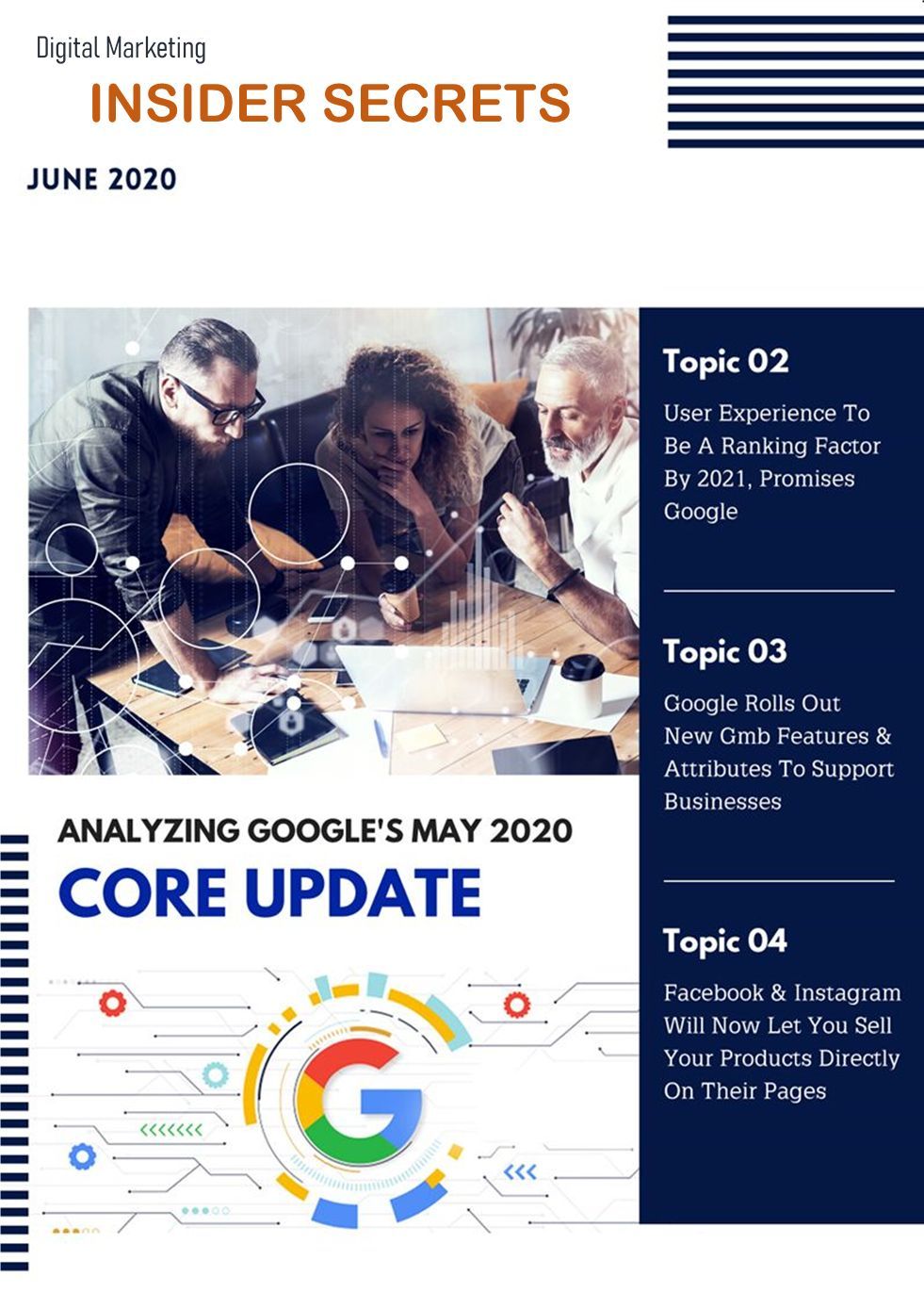



Google’s recent major Quality Core update rolled out on 4th May and caused more stir in the search results as compared to its last two updates.
As a result, some sites were rewarded for their overall quality while some faced issues such as losses for plagiarized content, pages with too much downtime, and overall lack of E.A.T. (Expertise, Authoritativeness, Trustworthiness) Signals.
Most SEOs were rather surprised as they weren’t expecting an update amid the COVID-19 pandemic. On the other hand, sites that were actually invested in improving their overall E.A.T. Signals were thrilled to be rewarded with higher rankings and more traffic.
Not surprisingly, we didn’t notice any major fluctuations with our client website rankings. In fact, there were quite a few websites with improvement in rankings and traffic after this update rolled out.
If you’d like to dig into knowing about the winners and losers, refer to this cool Google doc. Yet again, it all comes down to Quality. On that note, here are a few tips and tricks to boost your sites’ quality keeping in mind Google’s next core update that should roll out in about 3 months, if Google follows its regular timeline.
Boost E.A.T. Signals for Your Site Visitors & Google’s Algorithm
Things that will help boost your E.A.T. Signals!
Update your ‘About Us’ page – Rewrite your ‘About Us’ page while keeping in mind what your customers want. Highlight about your business, your experience and what makes you stand apart from the competitors. Mention if you are a family-owned business. If you hold any awards or recognition’s, make them a part of this page. Lastly, add high-quality, fresh images.
Improve your website’s downtime – Work on your website’s page load speed, specifically your mobile page load speed. See to it that all the videos and images on your website load fast.
Run your site through Google’s PageSpeed Insights tool. The first few pages on your site with major content should ideally open within 3-5 seconds. Speed Index should be less than 9 seconds with ads and 7 seconds without ads. Consider limiting the number of ads or eliminating them altogether if they are the reason behind your page load time.
Add ‘Terms of Service’ and ‘Privacy Policy’ pages – These pages give a good impression about your site’s overall authority profile with Google. For more on what these pages should include, you can refer to Google’s quality rater guidelines.
Include sources of reference for all medical/scientific claims – If your website contains any medical, statistical or factual claims, ensure to link them with relevant data sources. If your users and Google get to see proof of the claims that you have made on your website, it creates a huge signal of trust.
Build up your footer – Typical business information, such as contact details, are often found on the bottom of your site. So be sure it’s there with a current copyright date. As per Google, the address in the footer is recommended and, again, acts as a sign of trust. To show your expertise, you can also add your awards and accolades here.

Also, if you have been featured on any popular media platforms, always put that in! And add it to your ‘About Us’ page as well.

Include a clear ad disclosure – Give a clear ad disclosure if you are running a lot of ads on your website. A sentence or two, such as “This post may contain affiliate links”, should be enough with a link to your disclosure/privacy policy. You also want to remember to rel=”sponsored” your affiliate links as best practice.
Leverage article markup – Using article structured data markup that includes the “dateModified” attribute is highly recommended. Google knows that your content has been recently updated through article schema. Add a small note with the date the content was updated. This will cover both site users as well as Google’s A.I.
Make sure to link to your author’s page within your article markup so as to enable Google to tie together the content with the expert who wrote it.
Fix site errors – If your site has any technical issues that are holding it back, make sure to remove them. These issues may include broken links, duplicate meta descriptions, chain redirects, broken images, etc.
Have a visible call to action – Your call to action should be the first thing that you want your site visitor to do. It should be visible as they land each of your pages. It should be short and precise. If you want them to give you a call then say it! – Call Now!
Be easy to navigate – Looking at your site from the user’s perspective on both mobile and desktop is vital. Perform a ‘user experience’ (UX) audit, which can pay huge dividends, considering how heavily focused Google is on their version of ‘user experience’.
Remove and rewrite thin content – In this case, you should combine a handful of thin pages and create a solid resource of a particular topic. After that, you should redirect all those URLs to that single page. You can hear it in the recent Google hangout video.
Verify duplicate content – Check if the content on your website hasn’t been used elsewhere. With third party tools like CopyScape, you can quickly find and resolve duplicate content issues.
Refer to Google’s Quality Questionnaire – Google’s August 2019 blog post outlines a big list of questions that you can ask yourself and find out the areas of weakness on your site.
Get high-quality user-generated content – Creating user-generated content is important to encourage reviews for the products that you are selling. Have a Q&A feedback section for big resource articles or prompt positive user comments on your top pages. Not all sites can pull this off, but if you can, nothing like it for your page’s authority.
Read Google’s quality guidelines – Take the time out to go through Google’s Quality Guidelines. This all-in-one document is sure to refine your results.
After you are done with all the above tricks, make sure to have a read through what Google’s John Mueller said in his recent Google Webmaster Hangout on ways to recover from the most recent update.
Again, if you’re affected by the latest update, we can help. Just give us a call and our search experts will be able to assist you right away.

Google recently announced a new initiative known as “Web Vitals”. This initiative has been created to help websites know and improve their important user experience metrics. If this comes off as fairly new to you, we suggest you to first read that update.

With just a few weeks of sharing the news, the search engine giant released yet another information-packed announcement explaining users about how they would be incorporating these user experience metrics into the upcoming algorithm update, planned to be out in 2021, and their factor on the page level.
Read how Google plans to calculate these user experience metrics factors in the future:
“We’re combining the signals derived from Core Web Vitals with our existing Search signals for page experience, including mobile-friendliness, safe-browsing, HTTPS-security, and intrusive interstitial guidelines, to provide a holistic picture of page experience. Because we continue to work on identifying and measuring aspects of page experience, we plan to incorporate more page experience signals on a yearly basis to both further align with evolving user expectations and increase the aspects of user experience that we can measure.”
Google also has its focus on making sure websites do not have features that annoy users. Here is an example of how certain referenced buttons shift and lead to accidental clicks:
AMP will no longer be a ‘Top Stories’ requirement
Google also revealed that user experience will become such an essential factor that the ‘Top Stories’ carousel will not be limited to just AMP Pages. Rather, there will be more attention on pages with great experience metrics as explained in the Web Vitals Initiative:
“As part of this update, we’ll also incorporate the page experience metrics into our ranking criteria for the Top Stories feature in Search on mobile, and remove the AMP requirement from Top Stories eligibility. Google continues to support AMP and will continue to link to AMP pages when available. We’ve also updated our developer tools to help site owners optimize their page experience.”
Actionable strategy
Several studies have proved that better user experience can boost your conversions as well as overall rankings. So get ready to welcome the new update that will revolutionize ranking factors for websites.
As always, if you are looking to revamp your website as per the latest and upcoming Google guidelines, you can get in touch with us for assistance.
See How You Can Improve Your User Experience!

The pandemic has led to some major shifts in consumer needs and the way one conducts business, and Google is trying to do its best to accommodate these changes.
In an effort to make it as easy for businesses as possible to adjust to the shifting needs, Google has launched several new GMB features and attributes.
What are these new features & attributes?
Here’s a list of some of the latest GMB features and attributes that have been introduced by Google during the COVID-19 situation:
- Online Classes
- Online Appointments
- Online Estimates
- Online Service Bookings
- Temporarily Closed
- Secondary Hours
- COVID-19 Posts
- Curbside Pickup
- No Contact Delivery
- Dine-In
- Support Links
What you should do next
It is recommended that you immediately login and check your Google My Business listing to see whether all of these new features and attributes are available for your industry.
If you need any assistance with this, do get in touch.
Do You Have Questions About Google My Business? Ask Us!


In an effort to expand its e-commerce capabilities, Facebook rolled out Facebook Shops to enable businesses to set shop on Facebook. Going a step further, this summer, they’re planning on introducing Instagram Shop for businesses in the US. This move is being introduced as “a new way to discover and buy products you love in Instagram Explore.”
Both, Facebook Shops and Instagram Shop services are meant to enable businesses of all sizes to set up online stores through their Facebook and Instagram accounts.
The Idea Behind This Move
As per Facebook’s announcement, Facebook Shops is designed to make it easy for sellers to set up a single online store that can be accessed by users on Facebook as well as Instagram. Businesses can choose the products they want to feature and can also customize the look of their online store with a cover image and accent colors.
In their own words,
“People can find Facebook Shops on a business’ Facebook Page or Instagram profile, or discover them through stories or ads. From there, you can browse the full collection, save products you’re interested in and place an order — either on the business’ website or without leaving the app if the business has enabled checkout in the US.”
If and when the customers wish to connect with the businesses to ask questions, get support, track orders, etc., they can do so through WhatsApp, Messenger, or Instagram Direct messages. This service is designed to be a mobile-first experience, for both sellers and buyers, and is free to use.
Final Takeaway
During these times, when a strong digital presence is considered a means of survival for almost all businesses, this service is certainly a new avenue worth exploring. If you are into e-commerce and your business has a Facebook page or an Instagram account, then you should definitely try setting up your store on these platforms!
Need help in setting up your store? Get in touch with us for assistance.


Are you getting the best return out of your digital marketing?
Need an extra pair of eyes to review your online game plan? Let our experts take a look at your current state and do a comprehensive digital marketing analysis at no cost to you. Please call us at (800) 379-2829 or contact us today and we will get to work right away.


December is when every business owner out there is busy getting the biggest pie from the holiday cake. So it’s very rare that you see any buzz in SEO forums. But this time, we witnessed something different. Many people were online, sharing their experiences. Just like an unexpected tornado caught them off guard, and took away everything they had. Well maybe it became way too more dramatic, but we would like to inform you that Google has made changes to their core ranking algorithms. And as a result, may websites witnessed a drop in traffic as massive as 35%!
Moz reported high volatility in search results through Mozcast as can be seen below.

A non seasonal site owner, who hardly witnesses any fluctuations witnessed a drop of 30%! However, they were not alone and this was not due to any glitch. Many other users started sharing their trauma on webmaster forums. After a thorough research, we found out that Google did make changes to their core ranking algorithms and later on they confirmed the same. The statement Google sent was “we released several minor improvements during this timeframe, part of our regular and routine efforts to improve relevancy.”
We decided to do some number crunching ourselves. Our dataset of 4000+ websites and 350,000+ keywords (local and national) makes it easy for us to get a birds-eye view of how our client campaigns are performing.
Not surprisingly, we were happy to find that this update didn’t have any negative impact on our client campaigns. Most probably, the SEO deliverables which we offer saved our clients from this update. This is another example of how our strategies future-proof your business.
So if your organic leads were affected, especially around December 13th or 14th, open Google Analytics and check whether your site was hit by MACCABEES or not. If you were hit by this update OR want to make sure you’re not going to be a likely victim, we can help. Just connect with us and let our professional SEOs to do the work for you.
FREE INSTANT SEO Audit Of Your Website

December is considered a pretty slow month from the SEO point of view. But This December was different. There was a lot of buzz in the SEO forums because Google dropped a big algorithm change without warning (as it always does). Many SEO experts are calling it the Maccabees update which targeted keyword permutations as well as hit some celebrity websites.
Google also rolled out a PBN penalty and maybe a feature snippet / knowledge graph update.
But not every update from Google was shocking. Since 2013, Google promised to add a year plus of data to search console from quite some time, which they actually delivered. Here’s a screenshot of how the new Google Search Console will look.

They also published a voice search quality raters guidelines [PDF], advice on the mobile first index and also update their SEO Starter Guide.
Google provided us with the ability to make our meta descriptions longer by extending their snippets and also released a new rich results testing tool, which will be of great help.
So, all in all, we can say that it was pretty busy December for Google just like the rest of us.


Recently Google published their quality guidelines mainly for Google Assistant and Voice Search Results. As per the guidelines; better the quality of the voice search apter will be the responses generated.
Here’s what Google wrote —
"In the past we have received requests to see our evaluation guidelines from academics who are researching improvements in voice interactions, question answering and voice-guided exploration. To facilitate their evaluations, we are publishing some of the first Google Assistant guidelines. It is our hope that making these guidelines public will help the research community build and evaluate their own systems."
Google will be evaluating these dimensions for rating voice search responses.
- Information Satisfaction: The content should not be irrelevant. It has to be similar to the requirements specified by the user.
- Length: As far as the length is in question, the information should not be very little or too much. Unlike a web search, the users cannot scan the results and identify its usefulness, which is why it has to be sufficient enough to fulfill the user’s query.
- Formulation: This simply means that the source (e.g. website), language, and of course the content produced should be grammatically sound and easy to understand by the user.
- Elocution: Resources such as WaveNet and Tacotron 2 are rapidly simplifying the text-to-speech generation process thereby minimizing the need for human performance.
The full and short PDF is available as a download over here.


It seems like Google is testing a new feature, as some users have witnessed an image from the landing page, right next to the description area of the text ad.

Google spokesperson gave a generic statement regarding this — "We’re always testing new ways to improve our experience for our advertisers and users, but don’t have anything specific to announce right now."
So they neither denied nor accepted it. Google has tested many imaged ad formats over the years, and none made it to the mainstream. But we are seeing a lot of images right next to the text ads lately, so this time, they might fully role out this feature.
Last years Google launched large format mobile ads exclusively for automotive makers. It allowed the automotive company to entice the customers by showing the carousel of images of car models. Because the looks of cars play an important role, this update was considered useful for the car makers. Google might launch similar ad formats for other industries too, in near future.
We will keep you posted.
FREE INSTANT SEO Audit Of Your Website


Facebook constantly keeps updating its news feed algorithm to improve user experience and to serve them with relevant and engaging content. Marketers should be always aware about these new updates, as they can sometimes cause problems to them.
Recently, Facebook released three updates that can reduce marketers organic reach. The updates are about the type of content Facebook prefers to serve its users. Businesses who want to make the most of their Facebook presence, need to pay attention to these updates.
It gives preference to videos that has intent or repeat viewership
Videos are one of the most popular mode of marketing on Facebook. But as per Facebook’s last news feed algorithm update, it will give preference to the videos which people are searching for or returning to Facebook to watch.
The preference depends on two factors:
- Intent: When people search for your video content or visit your Facebook page to watch videos, Facebook will give such videos higher preference in news feed.
- Repeat Viewership: When viewers watch videos from the same publisher frequently, the videos uploaded by the publisher get more preference in the news feed.
It devalues engagement bait content
According to the latest news feed update, posts like “Share with a friend…” or “Like this if…” will be devalued and few people will only be able to view such posts.
Facebook has decided not to promote such spammy tactics to attract engagement, it has created a machine learning model to detect distinct types of engagement bait and it will take action against people or pages who upload such posts.
Here are few examples of engagement bait:
- Tag Baiting: Asking people to tag their friends.
- Comment Baiting: Asking people to comment with specific answers.
- Vote Baiting: Asking people to vote using reactions, comments, sharing, or other means of representing a vote.
- React Baiting: Asking people to react to the post (includes like, love, haha, wow, sad, and angry).
- Share Baiting: Asking people to share the post with their friends.
It devalues links to low-quality websites
With increasing spam and junk on the internet, Facebook will ensure that users don’t have to encounter such things by devaluing links that provide poor web experience.
Facebook has reviewed thousands of different pages linked to Facebook and has prepared a list of common characteristics that shows the web page has low-value.
Tips to ensure this update doesn’t affect the organic search of your website:
- Keep your landing page free from disruptive, malicious or shocking ads.
- Maintain your web page’s loading speed, websites with slow loading speed might get affected.
- Ensure your website’s landing pages where you want to send traffic, have substantive content.
- You need to keep an eye on your bounce rate and pages per session metrics.
So you want to post a video online eh?
Are you aware of what counts as a ‘view’, or if a particular platform will allow you to autoplay your video? Maybe you’re unsure about the maximum length of a video or if a metric dashboard is available to track your hits.
Regardless of the reason, we have provided an infographic below (via Marketing Land) providing answers to the above questions and more.
When was the last time you used Facebook, Twitter, or LinkedIn? Was it this morning? An hour ago? Maybe you’re on it now as you read this article. Social media has essentially taken over our lives to keep up with family, friends, current news, and to meet new people. But we have a feeling you aren’t taking full advantage of what social media has to offer.
To help you, we’ve put together an infographic (below) illustrating the top 8 benefits of using social media for marketing purposes.

The word “Social Media” is commonly used by many different people, but when it comes to explaining social media, it is very difficult to explain it because no one exactly know what social media is. Here we will tell you what social media actually is.
Social media covers websites and applications that not only give you information, but also allow you to participate in social networking with others around you. Your participation may be vary from something simple, such as commenting or ‘liking’ something someone has written, to more complex websites such as Flixster which recommend movies to you based on ratings by your friends. Basically, social media allows you to communicate to others around you. Some of the most popular social media websites are:
Facebook:
Facebook is one of the most popular social channels in the world, with just over 1.3 billion users around the globe. If you haven’t already heard of it, Facebook is free social media network where you can create your own profile, upload videos and photos, share a ‘status’, and you can also send messages to your friends and family.
Twitter:
Twitter is also a very massive and popular site. Over 500 million users use twitter. Twitter is a very effective social channel as it allows its users to interact very closely. Here user can broadcasts short posts which are known as tweets.
Google+:
Google+ is another effective media tool. It is designed to reproduce the way people interact offline more closely than other social networks, and integrates closely with Google Authorship.
Wikipedia:
Wikipedia was founded back in 2001. Rather than being a website which allows you to connect with peers to share updates on your life, Wikipedia instead aims to provide you with information. It is a free encyclopaedia created by the users of Wikipedia, for users of Wikipedia. Anyone who is registered on the website can create and edit an article.
LinkedIn:
LinkedIn has over 277 million users across the world, and you can connect with all these 277 million users through it. LinkedIn is specially designed for business relations – that’s why it is the best media channel to promote your content. The website aims to allow you to network between people who have similar professional interests, and it can also be used as a tool to reach out to people you may have in mind for a job, or to discuss your product/service.
Ranking In Search Engines:
 As you may already know, search engines don’t see all links equally, in the same way search engines also don’t count all social accounts similarly. Search engines use ‘social signals’ to determine how high your website is ranked. Social media websites rise more quickly than other website that’s why search engines use social signals to display social media sites on the top. Here are some of the main areas search engines considers about Facebook and Twitter accounts when ranking them:
As you may already know, search engines don’t see all links equally, in the same way search engines also don’t count all social accounts similarly. Search engines use ‘social signals’ to determine how high your website is ranked. Social media websites rise more quickly than other website that’s why search engines use social signals to display social media sites on the top. Here are some of the main areas search engines considers about Facebook and Twitter accounts when ranking them:
Twitter:
-
How many tweets and retweets a URL has.
-
What is the authority of the person who is tweeting?
Facebook:
-
How many +1’s a URL has.
-
What are the number of Facebook likes and shares URL has?
As mentioned above, search engines often take some social signals into account when ranking a website. If the followers of the Google+ will increase its ranking will also increase and in the same manner the ranking of other social media is also increase on search engines.
With the rise of social media usage during the last decade, it would be a surprise if more companies were not utilizing their reach and potential to gain a business edge.
You’ve got Twitter, FaceBook, YouTube, Instagram, Pinterest, FourSquare, and Google+ to name a few where your business information and latest projects should be published for millions of people to see.
But, how do you properly manage the variety of social media platforms to your full potential?
One method would be to create a spreadsheet with your social media accounts and update the sheet daily for the dates you’ve posted something. Another is to set a daily Outlook or Gmail calendar reminder to post something across all accounts.
 Or (pay attention here) you can sign up for a FREE Hootsuite account. Hootsuite is a social media management system that allows you link or network other social media platforms into its interface.
Or (pay attention here) you can sign up for a FREE Hootsuite account. Hootsuite is a social media management system that allows you link or network other social media platforms into its interface.
Hootsuite’s interface takes the form of a dashboard allowing you to see multiple streams simultaneously. This is particularly useful if you are a serial entrepreneur and want to quickly post across all accounts. Each individual stream then allows you to select the social media accounts you’d like to post to, add a photo or video, and walah, you’re done!
To recap, Hootsuite makes it easy to post across multiple social media accounts simultaneously, reaching potentially millions of followers in seconds. Having multiple streams set up allows for quick easy transition between companies which is especially useful if you are a serial entrepreneur.
Social Media: A Review
Ten years ago, if you would have mentioned the term “social media” to an Internet friend, they would have had no idea what you meant. But in the year 2014, nearly everyone with an Internet connection has heard of sites like Facebook, adding momentum and force to the social media advertising trend.
Social media is big business, and financial figures state that social media is scheduled to generate 11 billion dollars in total revenue by the year 2017! In 2013, social media made a total of 6.1 billion.
So, you can see how social media is poised to become an incredible force in online advertising in the very near years to come, and why you should seriously consider incorporating a social media marketing strategy for your business.
A Brief History Of The Most Popular Social Media Sites
StumbleUpon – Founded in November 2002 by Garrett Camp and a few other associates, as of April 2012, StumbleUpon now has more than 25 million registered users.
Facebook – Founded in February 2004 by Mark Zuckerberg, Facebook is the undisputed king of social media. As of March 2013, Facebook has a total of 1.11 billion active users, globally.
LinkedIn – Founded in December of 2002, LinkedIn boasts a total of 259 million users across more than 200 countries as of June 2013.
YouTube – Launched by three former Paypal employees in the year 2005, YouTube is now one of the most popular video sharing / social media comment sites ever. YouTube was purchased by Google for 1.65 billion dollars in 2006.
Tumblr – Founded by David Karp in the year 2007, this social media site is home to 205.9 million blogs.
Foursquare – This local search and discovery network site was launched in 2009 by Naveen Selvadurai and Dennis Crowley. As of 2014, it has 45 million registered users.
Twitter – Founded in 2006 by Evan Williams, Jack Dorsey, Noah Glass, and Biz Stone, as of 2014 Twitter now has over 500 million users. 271 million of these are “active” users.
Google+ – Launched in 2011 by Google and open to everyone, as of 2013 there are 540 million active, registered users.
Some Interesting Facts About Social Media You Might Not Know
- 60% of Google+ users log in at least once a day to check on their accounts.
- 23% of Facebook users check their accounts multiple times, 5+ times per day.
- 2 new members join the LinkedIn network every second!
- A total of 58 million tweets are sent every day!
- The Google +1 button is used 5 billion times daily!
How The Future Of Social Media Is Shaping The Face Of Modern Business
Sharing information and what you like is what social media sites are all about. Google allows us to +1 a site, and show the world how much we appreciate a specific page. Facebook allows us to “Like” a page, and thusly increase Internet awareness of a specific page or site.
Additionally, we can leave comments on social media pages that contain helpful insight, allowing social media business owners to improve the quality of the products and services they offer.
Social media pages are also highly capable of going “viral”, which happens because of a chain reaction of events.
First, a social media page will post an original and unique piece of content.
Second, it becomes popular because of the valuable, unique, funny, or otherwise noteworthy characteristic of the content.
Third, the popularity of the unique content is shared with friends and acquaintances until many thousands of people visit and agree that the content is noteworthy enough to share. And it’s at that point, that a social media page has officially gone, “viral”.
With sites like Facebook having over a billion registered users, there’s no stopping social media and how it’s scheduled to play a part in fostering business. Social media sites are wonderful for allowing any Internet user to share pages they find valuable and to spread the word about content they find beneficial.
It’s easy to get excited watching the number of “likes” and “re-tweets” accumulate. You feel important, like someone is listening to you and agrees with your brand. But does the number of “likes” you get on a social media post translate to brand recognition and more sales?
Counting your follows and tracking the amount of “likes” or “favorites” you get is an easy way to track success but it’s missing a few key metrics like, why people liked the post and whether or not the post converted anyone from a prospect to a sale. There are a lot of reasons why someone might click the like button on your Facebook business page or post including things that have nothing to do with your business, like the fact that their friend liked it or maybe because they thought the image you used was cute or funny. You’re not really going to find out if your social media accounts are making an impact until you start engaging with your followers.
Engagement is the conversation that happens about your brand online, it could be between you and your customers or it could be between your customers and their sphere of influence. With engagement an intentional action takes place that raises awareness about your business, your article or your post. Interaction is a much better validity test to your social media endeavors.
So how is engagement measured? There are several paid services out there but you can do some research yourself for free as well. Here are three easy and cheap ways to track your engagement:
- Track individual accounts yourself. Facebook has a tab called “Facebook Insights” that makes tracking engagement a snap. Remember you are looking for comments and shares as well as likes and post clicks. For other social media platforms like Twitter and Instagram you can track the number of “@ mentions” and comments your posts generate.
- Klout – Klout is a free web app that helps you track your posts popularity and level of engagement all in one.

- Cloze – also free, this web app will not only track your engagements but also your online relationships, alerting you when you’ve been neglecting people and posts that you should be paying better attention to.

Many companies have their ways of managing social media use in the workplace. Some block social networks, including Twitter and Facebook, while others allow their employees to log on to these sites during break times. Regardless of these policies, however, businesses have no way of controlling what their employees say about them during non-work hours. This is where problems start for employees and employers.
Majority of the Workforce is Online
Research says seven out of ten employees use social networks. These users spend an average of 15 ½ hours on social networking sites monthly. Furthermore, one out of four social network users don’t set their privacy parameters. This means anyone can see their posts on anything – from updates on their busy schedules to complaints about their job. Many employees don’t see any harm in this. It’s their social network, after all; they can say whatever they want to say on it. But can you really?
Effects of Your Social Network Activities on Your Career
There are no stopping employees from airing their feelings about their companies on social networks. This is why many businesses are now vigilant in monitoring what their employees say about them online. Sure, the First Amendment protects employees from legal actions of protected speech. This doesn’t mean, however, that you won’t deal with negative effects. Let’s think of it this way, you wouldn’t dare insult your employer to his face, for fear of getting fired. Right? Posting an insult on your social network is quite the same thing.
Here’s what can happen when you vent your dissatisfaction at work on your social networks.

Future Consequences
Using social networking sites irresponsibly can cost you your career. Getting fired, however, isn’t the only consequence you have to deal with. You may face lawsuits, especially when you gave away confidential details about your company and their business processes. You may also have a difficult time looking for another job. Apart from monitoring their brands, companies use social networks to find potential employees. When they don’t like what they see on your profile page, they won’t even invite you for an initial interview. Furthermore, many hiring managers conduct online background checks on their future employees. According to a study, about 70% of job recruiters reject applicants after doing online investigations.
Creating a Good Online Persona
Your online profile is an extension of yourself in the real world. What you do on social networks say many things about your personality offline. While your employers can’t control what you post online, your actions can very well shape your career. How you use these social networking sites can either boost or ruin your profession.
It’s easy to create a good online persona. When you can’t stop ranting on social networking sites, think about fixing your privacy setting. This can effectively limit the things you share publicly. It can also prevent future employers from thinking you’ll be a bad hire for their companies. You can get your foot through the door and the chance to let them know you can be an asset to the company. At the end of the day, responsible use of social media can help employers and employees achieve their goals.
Do you want to learn more about social media? Contact us for more information on social media marketing and management.

